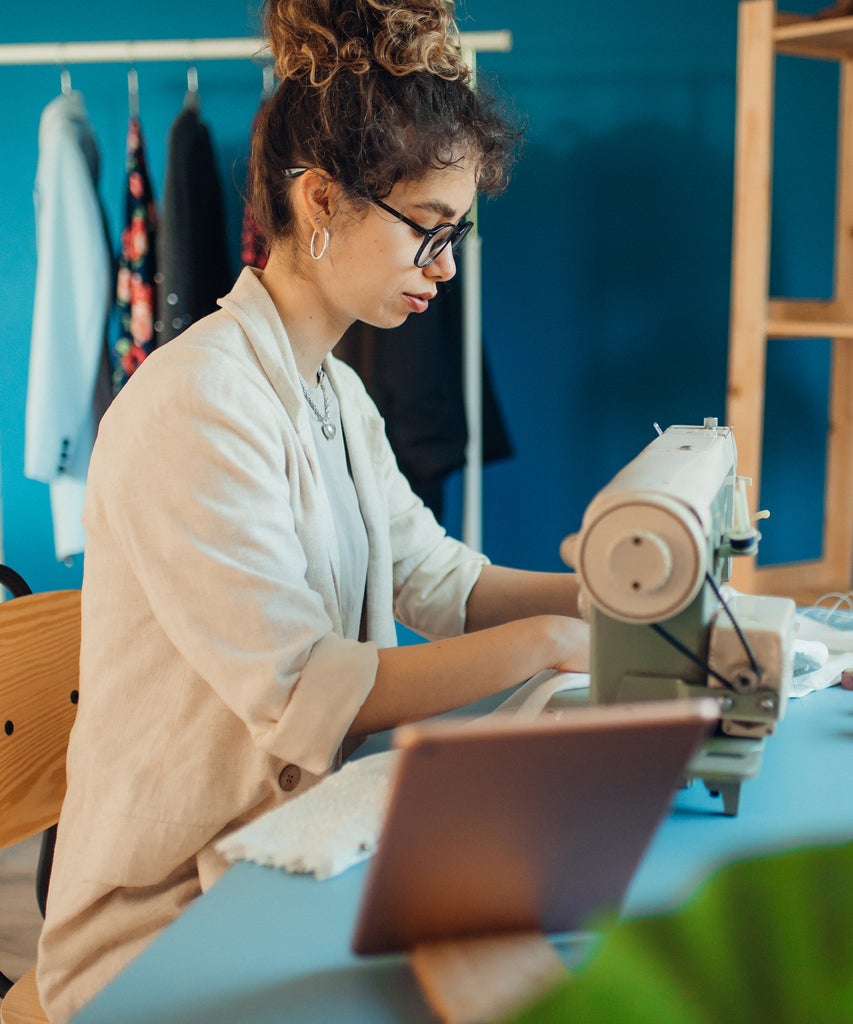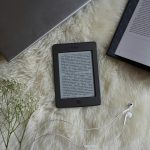As fashion fans grapple with the environmental impact of the clothing industry, they are looking for alternative ways to shop. Chief among them is secondhand shopping, renting clothes, and upcycling, a process in which people transform waste fabric or existing products into new clothing.
On TikTok, the #upcycling hashtag has over 9.5 billion views, while the #upcycledfashion hashtag has over 1.3 billion views, thanks to creators on the platform showing transformation projects that vary from turning a pair of pants into denim cutoffs to a brand-new dress (yes, really). There are also niche communities on the app, such as #sewingtiktok, as well as the more all-encompassing #fashiontok, all of which have rapidly become social media’s answer to Project Runway, thanks to amateur and expert sewers sharing their projects and know-how.
Still, as popular as upcycling has become on social media, the practice requires some basic level of sewing and craftsmanship, as sewers must deconstruct old products or materials and then decide what projects are most suitable based on the materials they have available.
That’s why creators like Kiana Bonollo, who has over 720,000 followers on the app, are helping followers figure out how to start learning sewing and upcycling with little to no skills. “It’s great to see more and more people upcycling,” says Bonollo, who is a fashion designer and patternmaker. “I don’t think it’s a trend; I think it’s going to continue to grow and stay with us in the future.” Bonollo, who started her channel in 2020, is dedicated to teaching people skills she learned while attending fashion school, as well as offering original patterns for her followers to try. “There’s just so much knowledge that I learned in college,” she says. “I’m very passionate about bridging the gap and making that knowledge more accessible.”
According to Bonollo, you don’t need a vast assortment of tools to start upcycling. Still, before you ruin a pair of pants with the wrong pair of scissors, here are a few essential tools and practices to make upcycling work — no matter your experience level.
A Good Pair Of Scissors
@kianabonollo Day 2 of my sewing tips! #sewingtips #sewing #fashiondesign #howtosew #sewingtutorial ♬ original sound – Kiana Bonollo
While most people tend to use the same pair of scissors around the house, at school, or at work, Bonollo says that it’s key to pick up a pair of fabric shears, which have slightly thinner and sharper blades, for sewing projects. “Otherwise, they [the blades] will get dull,” she says.
A Marking Tool
Upcycling requires a good amount of fabric cutting, so Bonollo recommends a marking tool, which varies from disappearing ink pens to tailor’s chalk. The latter is Bonollo’s favorite: “It applies really easily and it gets in the marks and gets removed when you use heat on your iron.” Marking tools are also important to guide the fabric through a sewing machine, so stitches are precise.
A Wide Variety Of Rulers
While most people use straight rulers, Bonollo recommends also adding a curved one to your toolbox. “A lot of people freehand sew and cut things, so I’d suggest using both straight and curved rulers in addition to the marking tool so you can really plan out those lines you’re creating,” she says.
Many, Many Pins
When assembling a new garment, it’s important to keep all the parts together before passing the fabric through the sewing machine. This is why Bonollo says it’s key to have multiple pins available when doing an upcycling project. She adds that pins also come in handy when you are tailoring garments to your body, which is why it’s helpful to have pins in several shapes and sizes.
A Seam Ripper
@kianabonollo SUCH a time saver!!! #sewingtips #sewing #fashiondesign #howtosew #sewingtutorial ♬ Skate – Trees and Lucy
The reality is that, while patterns and marking tools make sewing easier, projects go awry easily. “You don’t always have a concrete plan or something doesn’t always come out in the right way,” says Bonollo. “So you probably want to get acquainted with that seam ripper and start over.” She noted that it’s normal if, when starting out, people spend more time ripping seams than sewing.
A Sewing Machine
@kianabonollo Reply to @user273859394 for my beginners on a BUDGET!! NO- you do not need to break the bank to sew!!! #sewing #sewingmachine #beginnersewing ♬ original sound – Kiana Bonollo
While a sewing machine is an investment, Bonollo recommends getting one if you’re at all serious about the craft. “I would recommend either a Singer or a Brother machine,” she says, referring to two of the most popular sewing machine brands. Many of these machines are available for under $100 and are small and portable. Bonollo says that people should focus on finding a machine from a reputable brand, but not “spend crazy amounts on the machine before you even know how to use it.”
Bonollo emphasizes that people should look online or ask people on social media for advice on how to start using these tools. “When I was starting out, I could find basically anything that I wanted to find on YouTube or Google,” she says. She also says that it’s important to start with projects that are not too complicated. “Before you start a full project, try the basics, like cropping and hemming things,” she says. “Once you hit the machine, I’d say start with a skirt because it’s easier to fit on the body.” In terms of choosing materials to upcycle, Bonollo recommends opting for a piece that already fits, as well as garments with details like collars or embellishments that can be upcycled into other garments.
Now, go make it work.
Like what you see? How about some more R29 goodness, right here?
Sewing TikTok Is Social Media’s Own Project Runway







